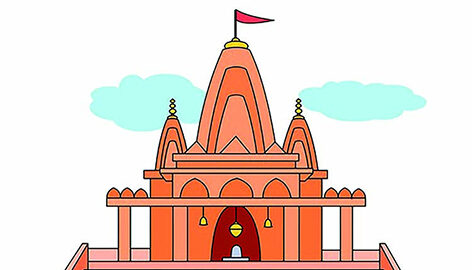

India began its trade relationship with the Portuguese in 1948 with the arrival of Vasco Da Gama. The Portuguese were among the most influential European powers to land on the Indian coast in 1498 and remained the dominant power for nearly two centuries until; the arrival of the British East India Company. The entrance of the British East India Company squashed the strength and supremacy of the Portuguese, and the Portuguese control was limited to Goa, Daman-Dui and Dadra-Nagar Haveli. The Portuguese issued their first Portuguese India banknotes in 1882.
The Portuguese enjoyed a good trade relationship with India; for more than a century. On 1st November 1882, the Portuguese issued the first uniface note, Portuguese India Rupia, in denomination 5 with a watermark. In the same month, some more notes with denominations of 10 Rupias, 20 Rupias, 50 Rupias and 100 Rupias; were issued. These notes bear a manuscript signature or are hand-signed. These rupias were in circulation around 1883.
The first Indo-Portuguese currency, notes in 1917, was written as “Uma Rupia”. It was the second issue of ‘Banco Nacional Ultramarino’, meaning the Overseas National Bank of New Goa.
On 1st January 1924, notes with the denomination 1, 2½, 5, 10, 20, 50, 100 & 500 were issued. These notes were printed by Thomas de la Rue & Co. Ltd., Gravadores, London as part of the Portuguese India banknotes. The 1 Rupia and 2 1/2 Rupia depict the majestic Tiger, found widely in the whole Indian peninsula, on the obverse of these notes and the famous Jagannath temple of Puri (Orissa); was depicted on the reverse side.
The Jagannath Temple is a significant Hindu temple dedicated to Jagannath, a form of Vishnu – one of the trinity of supreme divinity in Hinduism. Jagannath Temple is located in the Puri district of Odisha. The deity idol is made of wood and is ceremoniously replaced every twelve or 19 years with a replica.
The Jagannath Temple was built in the 12th Century by King Anantavarman Chodaganga of the Ganga Dynasty.
The temple is one of the most important temples for Hindu devotees, as it is one of the Char-Dham Pilgrimages.
The Puri temple is popularly known for Ratha Yathra (Chariot festival). In this Ratha Yathra, three principal deities; are pulled on huge and elaborately decorated temple cars.
The other denomination like 5, 10, and 20 Rupias Saptkoteshwara temple. Saptakoteshwar, a form of lord Shiva, has been a deity of Kings of the Kadamba Dynasty. The Saptakoteshwara temple is located in Navre, in the Indian state of Goa. This site is considered one of the six great temples of Lord Shiva in the Konkan area. This temple was built by queen Kamaldevi, as she was a faithful devotee of this god. The Kadamba kings proudly used the title (Birudu) Shree Saptakotisha Ladbha Varaveera.
The Portuguese Colonialism in India
Portuguese colonialism began with the arrival of the Portuguese invader Vasco Da Gama on the Malabar Coast on 20th May 1498. He came to India with the vision of trade. Despite the objection from Arab traders, Vasco Da Gama obtains permission to trade in Calicut from Zamorin, ruler of Calicut. Later, when he found a sea route bypassing the Ottoman Empire, his expedition yielded a profit far beyond the initial investment.
The First viceroy of the Portuguese was Francisco de Almeida; he established the first headquarters in modern-day Cochin. In 1509, Alfonso de Albuquerque became the second governor of the Portuguese. Alfonso de Albuquerque arrived on the coast of Calicut with the intention of the destruction of Zamorin. Soon, Alfonso de Albuquerque captured the palace of Zamorin and entered into a treaty with the Zamorin in 1513 to protect Portuguese interests in Malabar.
With the support of the Vijaynagar Empire, Alfonso de Albuquerque defeated Bijapur Sultanate in 1510 and established a permanent settlement in Goa.
Portuguese Architecture in India
Goa has a unique and colonial-era built heritage. Vasco-da-Gama landed on the Malabar Coast with the vision of gaining power in India and spreading the Catholic missionary. To spread Christianity, they built many churches, basilicas and seminaries. Portuguese India banknotes highlighted excellent architecture ranging from churches and monuments dating back centuries. Various buildings such as Fort Aguada, Reis Magos Fort as well as many Goan homes are structured in the Portuguese style of architecture.
The Mintage World Team comprises of experts, researchers and writers from the field of Philately, Notaphily and Numismatics who try to shed light on some of the most interesting aspects of coins, banknotes and stamps from not just India but across the globe as well.